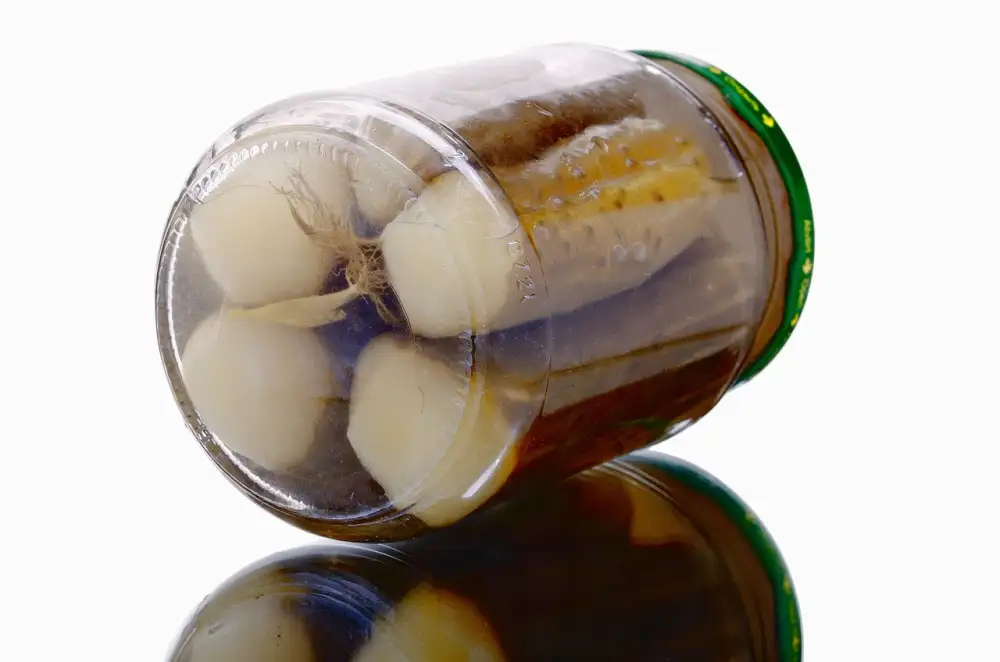Master the Art of Brining: Elevate Your Recipes with this Essential Technique

- What is Brining?
- Benefits of Brining
- How to Brine Food
- Choosing the right brine
- Preparing the brine solution
- Brining time and temperature
- Brining techniques for different types of food
- Tips for Successful Brining
- Common Mistakes to Avoid
- Brining vs. Marinating: What's the Difference?
- Brining Safety Precautions
- Popular Brining Recipes
- Brined Turkey
- Brined Pork Chops
- Brined Chicken
- Brined Vegetables
Brining is a culinary technique that has been used for centuries to enhance the flavor and texture of various foods. It involves soaking food in a saltwater solution, known as a brine, before cooking. This simple yet effective method can elevate your recipes to new heights by infusing them with moisture and flavor.
Whether you're preparing meat, poultry, fish, or even vegetables, brining can make a significant difference in the final outcome of your dish. By understanding the basics of brining and mastering this essential technique, you can take your cooking skills to the next level and impress your family and friends with deliciously tender and flavorful meals.
What is Brining?
Brining is a culinary technique that involves soaking food in a saltwater solution, known as brine, before cooking. The process of brining helps to enhance the flavor, tenderness, and juiciness of the food. The salt in the brine helps to break down proteins in the meat, allowing it to retain moisture during cooking. Additionally, brining can also infuse flavors into the food by adding herbs, spices, and other aromatics to the brine solution. Overall, brining is an essential technique that can elevate your recipes by improving both taste and texture.
Benefits of Brining
Brining is a technique that offers numerous benefits to your cooking. Firstly, brining enhances the flavor of your food by infusing it with a delicious blend of seasonings. The salt in the brine helps to draw out moisture from the meat, making it juicier and more tender.
Secondly, brining helps to improve the texture of your food. The salt in the brine breaks down muscle fibers, resulting in a more tender and succulent end product. This is particularly beneficial for lean cuts of meat that tend to be dry when cooked.
Furthermore, brining can also help to reduce cooking time. By pre-soaking your food in a brine solution, it allows for faster and more even cooking. This is especially useful for larger cuts of meat like turkey or pork roast.
Lastly, brining can also act as a natural preservative. The salt in the brine inhibits the growth of bacteria, extending the shelf life of your food. This can be particularly advantageous when preparing large quantities or when you need to store leftovers.
In summary, brining not only enhances flavor and tenderness but also reduces cooking time and acts as a natural preservative. Incorporating this essential technique into your cooking repertoire will undoubtedly elevate your recipes to new heights of excellence.
How to Brine Food
a. Choosing the right brine: Select a brine that complements the flavors of your dish. Consider using ingredients like salt, sugar, herbs, spices, and aromatics.
b. Preparing the brine solution: Dissolve the salt and sugar in water over low heat. Add in your desired herbs and spices for extra flavor.
c. Brining time and temperature: The duration of brining depends on the type and size of the food. Generally, poultry can be brined for 4-8 hours, while larger cuts of meat may require overnight brining. Keep the food refrigerated during this process.
d. Brining techniques for different types of food: For poultry or meat, submerge it completely in the brine solution. For vegetables or smaller cuts of meat, you can use a zip-lock bag or a container with enough brine to cover them.
Remember to rinse off excess salt before cooking to avoid an overly salty taste.
These steps will ensure that your food absorbs moisture and flavors from the brine, resulting in tender and flavorful dishes.
Choosing the right brine
Choosing the right brine is crucial for successful brining. The main components of a brine are salt, water, and sometimes sugar. When selecting the type of salt, it's best to use kosher or sea salt as they dissolve easily and don't contain additives. The amount of salt needed depends on the food being brined and personal preference. For example, a general guideline is to use 1 cup of salt per gallon of water for poultry. Experiment with different flavors by adding herbs, spices, citrus zest, or even apple cider vinegar to enhance the taste of your brine. Keep in mind that the flavors will infuse into the food during the brining process.
Preparing the brine solution
Preparing the brine solution is a crucial step in the brining process. To make a basic brine, combine water, salt, and sugar in a pot and bring it to a boil. Stir until the salt and sugar are completely dissolved. You can also add flavorings like herbs, spices, or citrus zest to enhance the taste of your brine. Once the brine solution has cooled down, it's ready to be used for brining your food. Remember to always use cold brine when submerging your food for optimal results.
Brining time and temperature
Brining time and temperature are crucial factors in achieving the desired results. The duration of brining depends on the size and type of food being brined. For example, a whole chicken may require 4-6 hours, while larger cuts of meat like pork shoulder or turkey can benefit from overnight brining.
It's important to note that brining for too long can result in overly salty food, so it's essential to follow recommended guidelines. As for temperature, it's best to keep the brine and food refrigerated during the entire process to prevent bacterial growth.
For delicate foods like fish or vegetables, shorter brining times are recommended as they can easily become oversaturated with salt. Generally, 30 minutes to an hour is sufficient for these types of ingredients.
By carefully considering the appropriate brining time and temperature for each specific food item, you can ensure that your dishes are perfectly seasoned and infused with flavor.
Brining techniques for different types of food
Brining techniques vary depending on the type of food you are brining. For poultry, such as chicken or turkey, it is best to use a wet brine. Submerge the bird in a solution of water, salt, sugar, and any desired herbs or spices for at least 12 hours. For seafood like shrimp or fish fillets, a shorter brining time of 30 minutes to an hour is sufficient to enhance flavor and texture. Dry brining works well for larger cuts of meat like pork or beef. Rub the meat with a mixture of salt and spices and let it sit in the refrigerator for several hours or overnight before cooking. Adjusting brining times and flavors can help you achieve perfectly seasoned and moist results every time.
Tips for Successful Brining
1. Use the right container: Choose a non-reactive container such as a food-grade plastic or stainless steel. Avoid using aluminum or copper containers, as they can react with the brine and affect the flavor of the food.
2. Ensure complete submersion: Make sure that the food is fully submerged in the brine solution. This ensures even distribution of flavors and helps to tenderize the meat.
3. Don't over-brine: Follow the recommended brining time for your specific recipe. Over-brining can result in overly salty or mushy meat.
4. Refrigerate during brining: Keep your brining container in the refrigerator to maintain a safe temperature and prevent bacterial growth.
5. Rinse before cooking: After brining, rinse off excess salt from the food before cooking to avoid it becoming too salty.
6. Adjust seasoning accordingly: Since brining adds salt to your food, adjust other seasonings in your recipe accordingly to avoid over-seasoning.
7. Experiment with flavors: Enhance your brine by adding herbs, spices, citrus zest, or even sugar for a touch of sweetness. Be creative and try different combinations to elevate the flavor of your dishes.
Remember, successful brining requires careful attention to detail and experimentation with different ingredients and techniques. With practice, you'll be able to master this essential technique and take your cooking skills to new heights!
Common Mistakes to Avoid
1. Over-brining: One common mistake is brining food for too long. Over-brining can result in overly salty and dry meat. Follow the recommended brining times for each type of food to achieve the best results.
2. Under-brining: On the other hand, under-brining can lead to bland and flavorless food. Make sure to give your food enough time in the brine solution to fully absorb the flavors.
3. Using too much salt: While salt is essential for brining, using too much can make your dish excessively salty. Follow the recommended salt-to-water ratio in your brine recipe.
4. Not rinsing properly: After brining, it's important to rinse off excess salt from the food before cooking. Failure to do so can result in an overly salty end product.
5. Brining non-porous foods: Brining is most effective for meats and vegetables with porous textures that can absorb the flavors of the brine solution. Non-porous foods like hard cheeses or firm tofu may not benefit from brining.
6. Ignoring temperature guidelines: Brine solutions should be cooled before adding them to food, as hot or warm solutions can promote bacterial growth. Similarly, refrigeration during the brining process is crucial for food safety.
By avoiding these common mistakes, you'll be able to elevate your recipes and achieve deliciously seasoned dishes through proper brining techniques.
Brining vs. Marinating: What's the Difference?
Brining and marinating are two popular techniques used to enhance the flavor and texture of food, but they differ in their approach and purpose.
Brining involves soaking food in a saltwater solution, known as a brine, for a period of time before cooking. The salt in the brine helps to break down the proteins in the meat, resulting in a more tender and juicy final product. Brining also allows flavors to penetrate deep into the food, resulting in a more flavorful end result.
On the other hand, marinating involves soaking food in a mixture of acid (such as vinegar or citrus juice), oil, and spices for a period of time before cooking. The acid helps to tenderize the meat by breaking down its fibers, while the oil and spices add flavor. Marinating is often used to infuse flavors into the surface of meat or vegetables.
While both techniques can enhance the taste and texture of food, there are some key differences. Brining primarily focuses on moisture retention and tenderness, while marinating primarily focuses on adding flavor. Brining is especially beneficial for lean meats like poultry or pork that tend to dry out during cooking. Marinating works well for meats that benefit from added acidity or when you want to impart specific flavors.
In conclusion, understanding the difference between brining and marinating can help you choose the right technique for your desired outcome. Whether you want to improve moisture retention or add bold flavors, mastering these techniques will elevate your cooking skills and take your recipes to new heights.
Brining Safety Precautions
1. Use Food-Safe Containers: When brining, always use non-reactive containers such as food-grade plastic or stainless steel. Avoid using containers made of aluminum or copper, as these can react with the brine and contaminate the food.
2. Proper Refrigeration: It is crucial to keep the brining food at a safe temperature to prevent bacterial growth. Always brine in the refrigerator, ensuring that the food is fully submerged in the brine solution and kept at a temperature below 40°F (4°C).
3. Hygiene Practices: Maintain good hygiene throughout the brining process. Wash your hands thoroughly before handling the food or preparing the brine solution. Clean all utensils, cutting boards, and surfaces that come into contact with raw meat to avoid cross-contamination.
4. Brining Duration: Follow recommended brining times for different types of food to ensure safety and optimal flavor. Over-brining can lead to overly salty results and compromise texture.
5. Salt Measurements: Be precise when measuring salt for your brine solution. Too much salt can make the food excessively salty, while too little may not provide sufficient flavor or preservation.
6. Allergies and Dietary Restrictions: Take into consideration any allergies or dietary restrictions of your guests when using ingredients in your brine solution, such as nuts, spices, or citrus fruits.
Remember, following these safety precautions will help you enjoy deliciously brined dishes while keeping your meals safe and free from potential health risks.
Popular Brining Recipes
a. Brined Turkey: To prepare a succulent and flavorful turkey, brine it overnight in a mixture of water, salt, sugar, and spices. This will ensure that the meat remains moist during cooking and enhances its natural flavors.
b. Brined Pork Chops: Elevate your pork chops by brining them in a solution of water, salt, sugar, and herbs for at least 4 hours. This will result in juicy and tender pork chops with enhanced taste.
c. Brined Chicken: For juicy and flavorful chicken, immerse it in a brine made of water, salt, sugar, and aromatic ingredients like garlic or herbs. Let the chicken soak in the brine for a few hours before cooking to achieve amazing results.
d. Brined Vegetables: Yes, even vegetables can benefit from brining! Try soaking firm vegetables like cucumbers or carrots in a brine solution to add extra flavor and crispness to salads or pickles.
These popular brining recipes are just a starting point - feel free to experiment with different spices and flavors to create your own unique dishes!
Brined Turkey
One of the most popular uses of brining is for turkey. Brining a turkey before roasting it can result in a moist and flavorful bird that will impress your guests. The salt in the brine helps to break down the proteins in the meat, allowing it to retain more moisture during cooking.
To brine a turkey, start by choosing a brine that complements the flavors you want to infuse into the meat. A simple brine can be made with water, salt, sugar, and spices such as peppercorns, bay leaves, and thyme.
Next, prepare the brine solution by dissolving the salt and sugar in hot water. Allow it to cool completely before adding it to a large container or bag along with the turkey. Make sure the turkey is fully submerged in the brine solution.
The brining time for a turkey depends on its size. As a general rule, allow about 1 hour of brining time per pound of turkey. Keep the turkey refrigerated during this time to ensure food safety.
After brining, remove the turkey from the solution and rinse it thoroughly under cold water to remove any excess salt. Pat it dry with paper towels before roasting according to your preferred recipe.
Brined turkey is known for its juicy and flavorful meat that is sure to be a hit at your next holiday gathering or special occasion. Give it a try and elevate your cooking skills with this essential technique.
Brined Pork Chops
Brining is an excellent technique to enhance the flavor and juiciness of pork chops. By immersing the meat in a saltwater solution, you can ensure that each bite is tender and succulent.
To brine pork chops, start by choosing a brine that complements the flavors you desire. A basic brine consists of water, salt, sugar, and aromatics such as herbs and spices. You can experiment with different ingredients like garlic, peppercorns, or bay leaves to add depth to your brine.
Prepare the brine solution by dissolving the salt and sugar in water over low heat. Once cooled, place the pork chops in a container and pour the brine over them. Make sure the chops are fully submerged in the liquid.
The brining time for pork chops depends on their thickness. For thin cuts, 1-2 hours is sufficient, while thicker cuts may require 4-6 hours. It's crucial to refrigerate the chops during this process to prevent bacterial growth.
After brining, remove the pork chops from the solution and rinse them thoroughly under cold water to remove excess salt. Pat them dry with paper towels before cooking.
When cooking brined pork chops, adjust your seasoning accordingly as they already contain salt from the brine. Grill or pan-fry them until they reach an internal temperature of 145°F (63°C) for medium doneness.
Brining pork chops not only adds flavor but also helps retain moisture during cooking. The result is juicy and tender meat that will impress your guests with its exceptional taste and texture.
Brined Chicken
Brining chicken is a fantastic way to elevate its flavor and ensure it stays moist and tender during cooking. The brine solution helps to infuse the chicken with extra moisture and enhances its natural flavors. To brine chicken, start by choosing a brine that complements the flavors you want to achieve. A basic brine consists of water, salt, sugar, and aromatics like herbs and spices.
To prepare the brine solution, dissolve the salt and sugar in water over medium heat until fully dissolved. Let it cool completely before adding the chicken. Place the chicken in a container or resealable bag and pour the brine over it, making sure it is fully submerged. Refrigerate for at least 2 hours or up to overnight.
The ideal brining time for chicken depends on its size. For boneless, skinless chicken breasts, 1-2 hours should be sufficient, while whole chickens may require up to 12 hours. It's important to maintain a safe temperature during brining by keeping the chicken refrigerated at all times.
Different brining techniques can be used depending on your desired outcome. For a more flavorful result, consider dry-brining by rubbing salt directly onto the chicken and letting it sit in the refrigerator for several hours before rinsing off excess salt.
When ready to cook, remove the chicken from the brine and rinse it thoroughly under cold water to remove any excess saltiness. Pat it dry with paper towels before proceeding with your chosen cooking method.
By following these steps, you'll end up with succulent and flavorful brined chicken that will take your recipes to new heights of deliciousness!
Brined Vegetables
Brining vegetables is a lesser-known technique, but it can truly elevate the flavors and textures of your dishes. By brining vegetables, you can enhance their natural sweetness and crispness while adding depth to their overall taste.
To brine vegetables, start by choosing firm and fresh produce such as cucumbers, carrots, or radishes. These vegetables work well with brining because they can absorb the flavors of the brine without becoming mushy.
Prepare a brine solution by combining water, salt, sugar, and any desired spices or herbs. The ratio of salt to water should be around 1 tablespoon of salt per cup of water. Dissolve the salt and sugar completely in the water before adding the vegetables.
Place the vegetables in a container or a resealable bag and pour the brine solution over them until they are fully submerged. Let them soak in the brine for at least 30 minutes or up to 24 hours in the refrigerator.
After brining, remove the vegetables from the brine and rinse them thoroughly under cold water to remove excess saltiness. Pat them dry before using them in your recipes.
Brined vegetables can be used in various ways - as toppings for salads or sandwiches, pickled snacks, or even roasted for added flavor. Experiment with different combinations of spices and herbs to create unique flavor profiles that complement your dishes.
By incorporating brined vegetables into your cooking repertoire, you'll add an extra layer of complexity and enhance the overall dining experience for yourself and your guests. So don't hesitate to explore this technique and elevate your culinary skills to new heights.
Incorporating the art of brining into your cooking repertoire can truly elevate your culinary creations. By immersing food in a saltwater solution, you can enhance its flavor, tenderness, and juiciness. Whether you're preparing poultry, pork, or vegetables, brining is a versatile technique that guarantees delicious results.
Not only does brining infuse food with savory flavors, but it also helps to retain moisture during the cooking process. This means that even lean cuts of meat like turkey breast or pork chops will turn out succulent and juicy. The added moisture also prevents overcooking and ensures a more even distribution of heat.
To master the art of brining, start by choosing the right brine for your desired outcome. Experiment with different flavors by adding herbs, spices, citrus zest, or even sweeteners to create unique combinations. Prepare the brine solution by dissolving salt and sugar in water and let it cool before submerging the food.
Timing and temperature are crucial when it comes to brining. Follow recommended guidelines for specific types of food to achieve optimal results. For example, chicken may require a shorter brining time compared to larger cuts like turkey or pork loin.
Different foods may require different brining techniques. For whole birds or large roasts, consider using a brining bag or container that allows for complete immersion. For smaller cuts or vegetables, you can use a shallow dish or zip-top bag for convenience.
To ensure successful brining every time, remember these tips: always refrigerate during the entire process; never reuse leftover brine due to potential bacterial contamination; rinse off excess salt before cooking; and adjust seasoning accordingly as some foods may become saltier after being brined.
It's important to note that while marinating and brining both involve soaking food in flavorful liquids, they differ in their purpose and technique. Marinating primarily adds flavor, while brining enhances both flavor and texture. Brining is also a wet method, whereas marinating typically involves a mixture of oil, acid, and spices.
Lastly, it's essential to practice brining safety precautions. Always use food-grade containers and utensils, keep the brine solution at a safe temperature (below 40°F/4°C), and ensure proper hygiene throughout the process to prevent foodborne illnesses.
To get started on your brining journey, try out popular recipes like brined turkey, pork chops, chicken, or even vegetables. The possibilities are endless when it comes to creating flavorful and tender dishes using this essential technique.
So why not elevate your cooking skills with the art of brining? With its numerous benefits and versatility in enhancing flavors, textures, and moisture retention, you'll be able to create restaurant-quality meals right in your own kitchen. Happy brining!
Published: 26. 02. 2024
Category: Recipes



